From Kotlin to Goblin: how TechTrain passed
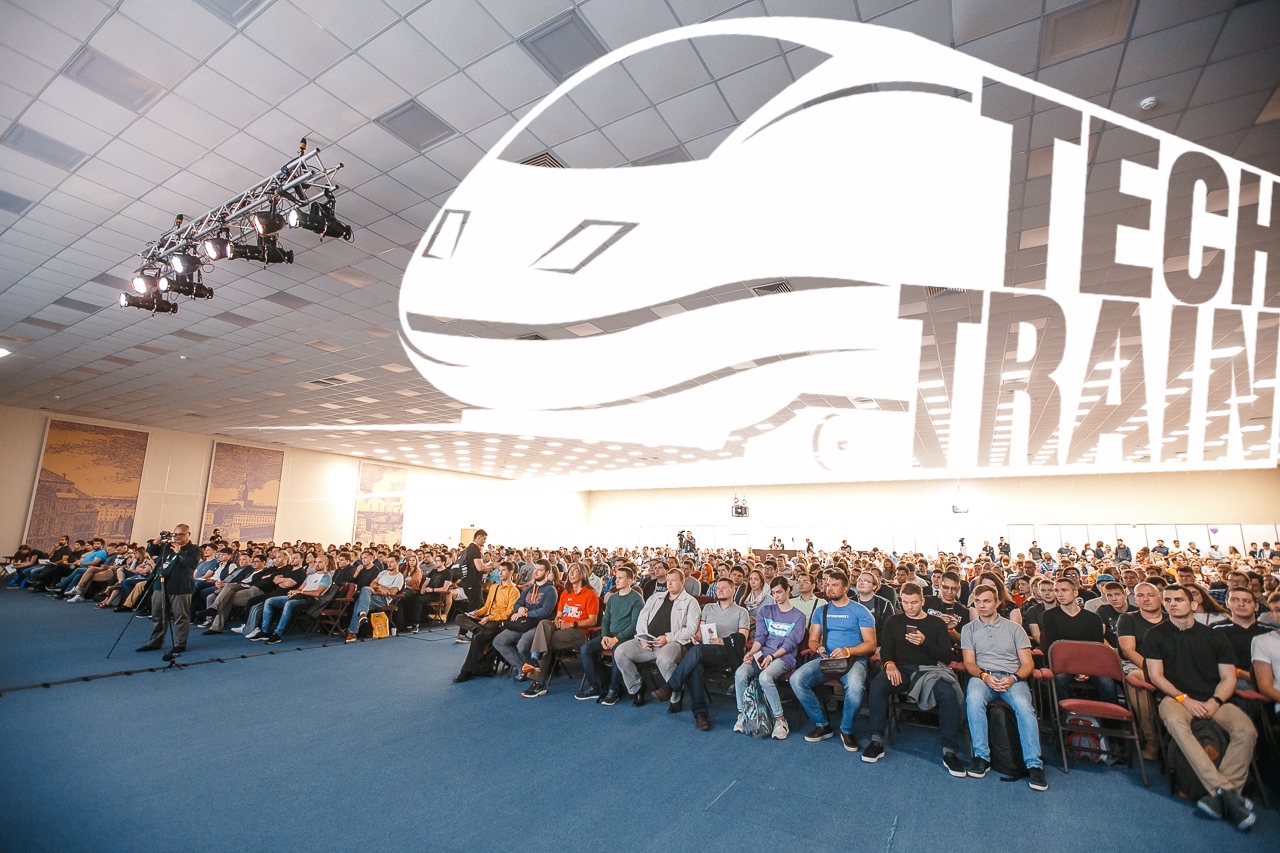
Arranging the IT-festival TechTrain, we ourselves did not fully understand what it would turn out to be. Of course, we knew what the reports would be and what the stands would be. But when you collect 2000 IT professionals for a completely new event with a completely different background, you can get some answers only in practice. What will the audience like most? What would be the main problem? Will people who write code in different languages find a common language?
Now a week has passed with TechTrain, during which time we collected reviews and posted photos , so you can take stock.
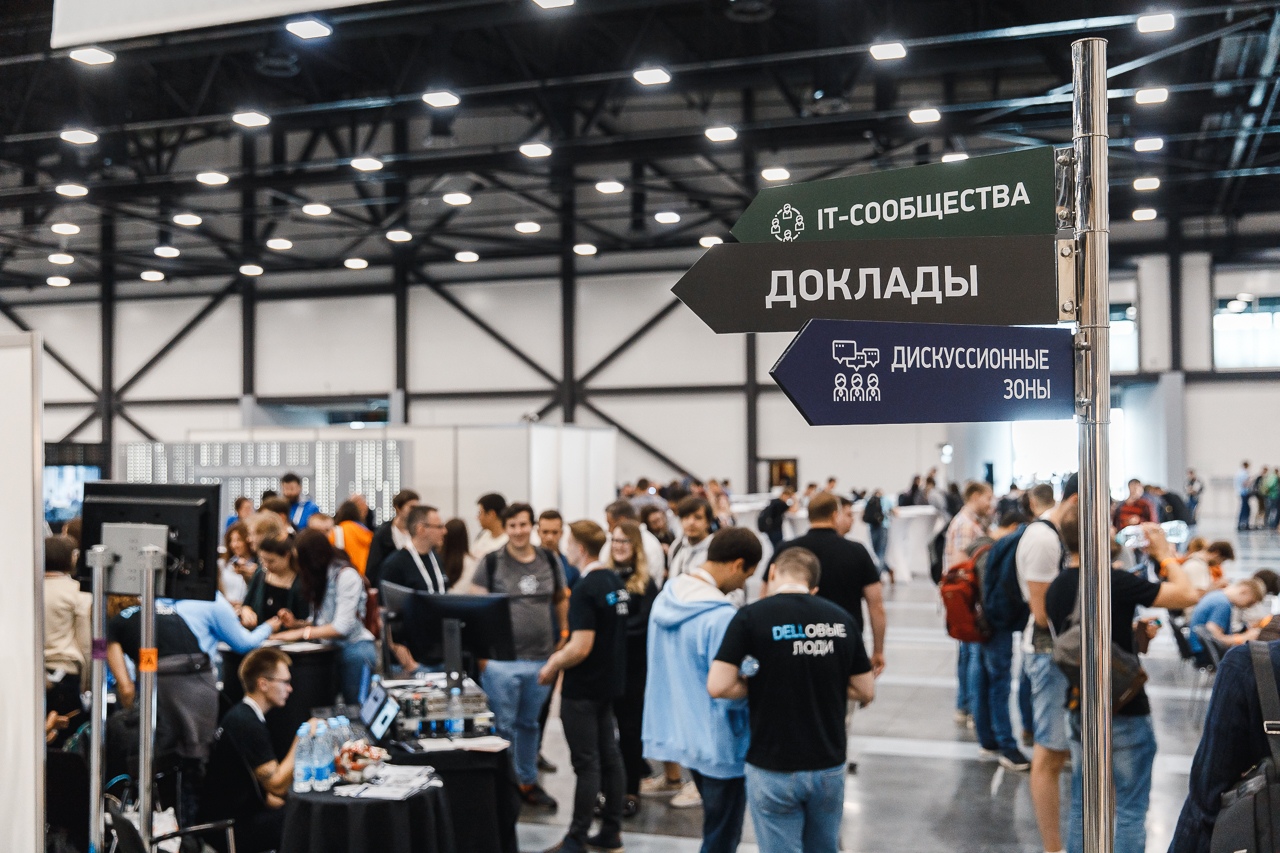
It is difficult to write about an event where a lot of things happen at once at a time. While some viewers listen to the reports, others find out something about PiterPy from Dmitry nazarov_tech Nazarov , others are waiting for the results of the competition from an IT company, the fourth are being hacked to Prince of Persia on retro computers and so on. But in the end, wherever you are, you see only a small part of what is happening, and in this text a lot of interesting things can be missed. If you were on TechTrain, feel free to add in the comments!
We usually hold conferences for developers (from Joker to HolyJS), and compared with them, this diversity was striking. At conferences during presentations, the hall is almost completely empty: everyone is gaining knowledge in their main specialty. Here the reports were also important, but still many viewers remained in the hall.
What exactly was an alternative to reports? For example, the stands of the IT-communities - this is not at our regular conferences. On some of these booths, one could simply find out “who you are and what you are doing,” and somewhere went further and started an interesting project: PiterJS staged a “Code in the Dark” contest with makeup blindly, and Podlodka podcast took a mini-interview participants of the festival, from Oleg olegbunin Bunin to the director of Postgres ProfessionalOleg Bartunov .
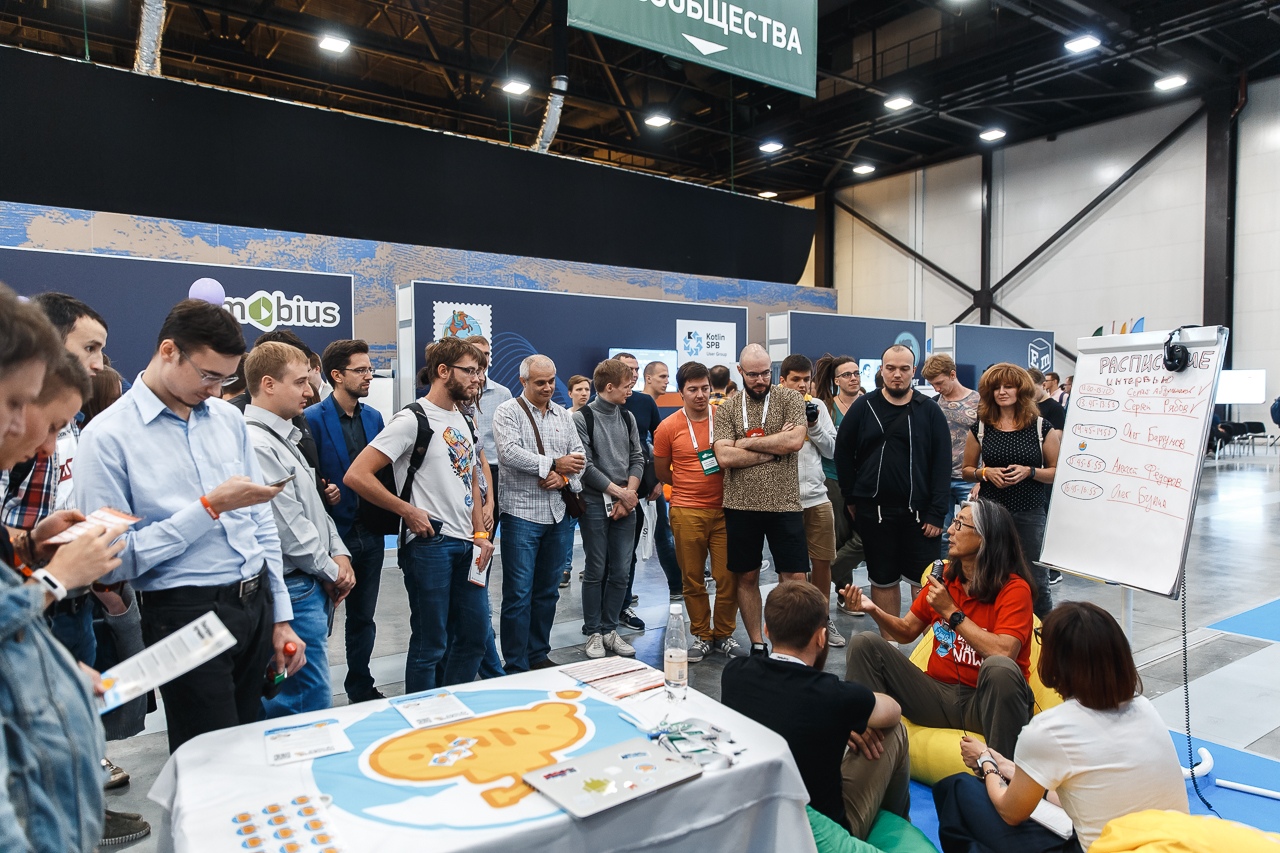
In addition to the stands, the communities also had a “demo zone”: their own small platform for 15-minute mini-reports. It was possible not to go to the hall for a “big report”, but to sit for a short while listening to something right in the lobby and go further.
While IT communities were located in one side of the hall, the opposite was occupied by IT companies. They had their own demo zone, which they used for similar 15-minute presentations and for summing up the contests. And there among the mini-reports was found a clear leader. The story of Pavel Yurkinfrom “Leroy Merlin” about his pet project — a program for writing real-time music “under Bach” — attracted a lot of people and ended with loud applause. Here, the format of the performance well coincided with the format of the site: if the “big” reports are targeted, the “small” ones often turn out to be “walked by and became interested”, and when Pavel started musical fragments from the speakers, it was very attractive.
Of course, besides the demo zone, the companies had stands. These can be seen at conferences, but here there were a lot of them and quite different: from the famous for its business services "Kontura" to the delivery of healthy food GrowFood, from the American giant Dell EMC to the Russian JetBrains.
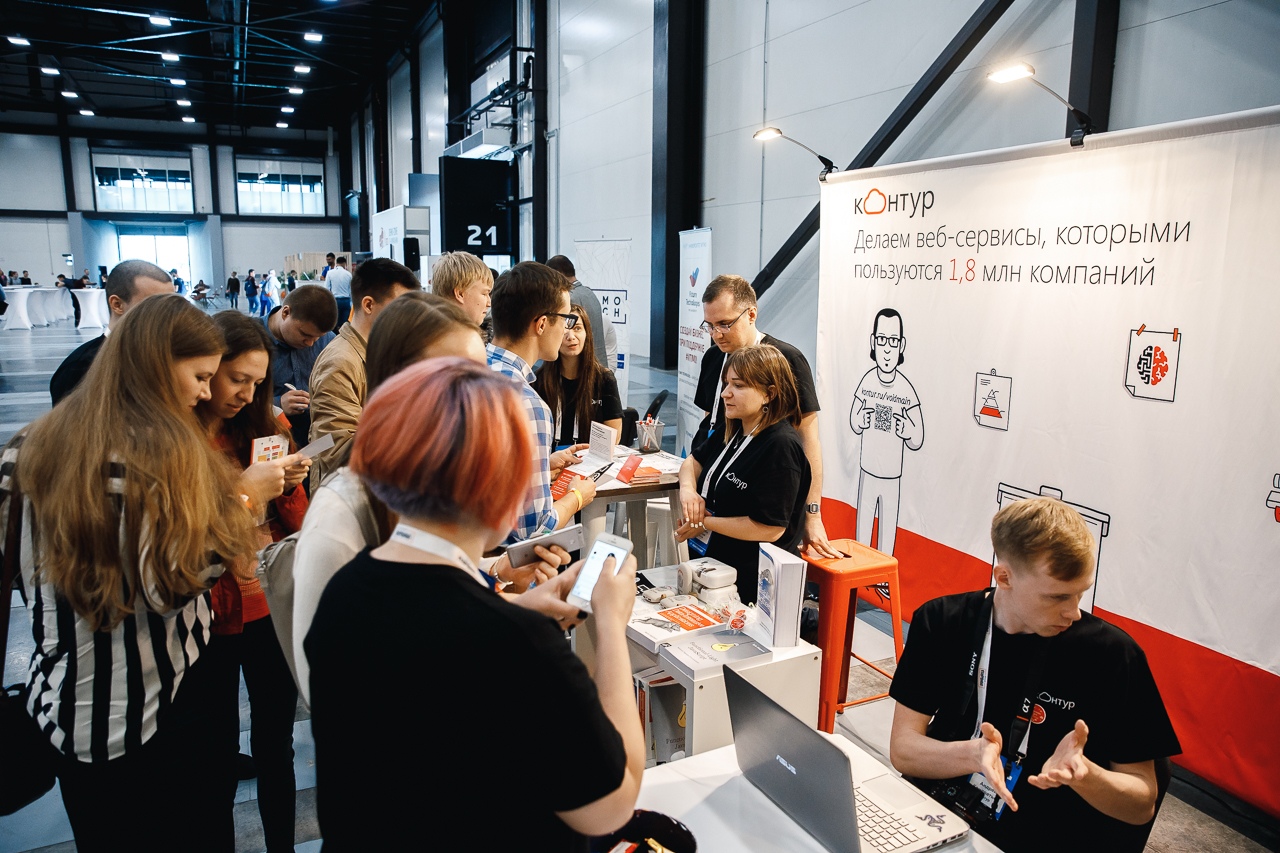
And besides this, in the lobby, they played in the backgrounds from Mosigra, participated in the quiz “Brainwind”, ate ... So, here we came to a painful moment. The main problem viewers TechTrain amicably called food: they say, and the queues are long and tasteless. There were also spectators who liked everything, but on the whole the problem is obvious, we realized it and take this experience into account.
Well, you can at least rejoice that the main drawback of the event was related to food, and not to what people came for - like reports.

Let's move from food to food for the mind: what were the reports about? In the case of TechTrain, we ourselves needed to think in advance about this issue. Conducting many years of conference for programmers, we understand what issues concern dotnetchikov, and what - mobile developers. But what to tell at the event, where there will be those, and others? What is the level of preparation for the audience to expect when viewers have different backgrounds? How to make one not all too clear, and others too incomprehensible?
The result was two different options. Some reports were designed for a specific segment of the audience: the topic “Flutter's place in the life of an Android developer” hardly attracted many people who are not related to Android. And although the session blitz questions about Kotlin with Andrei Breslavanyone could come, it is not surprising that the Kotlinists went there with specific questions, such as “whether a ternary operator will appear”. (It turned out to appear!)
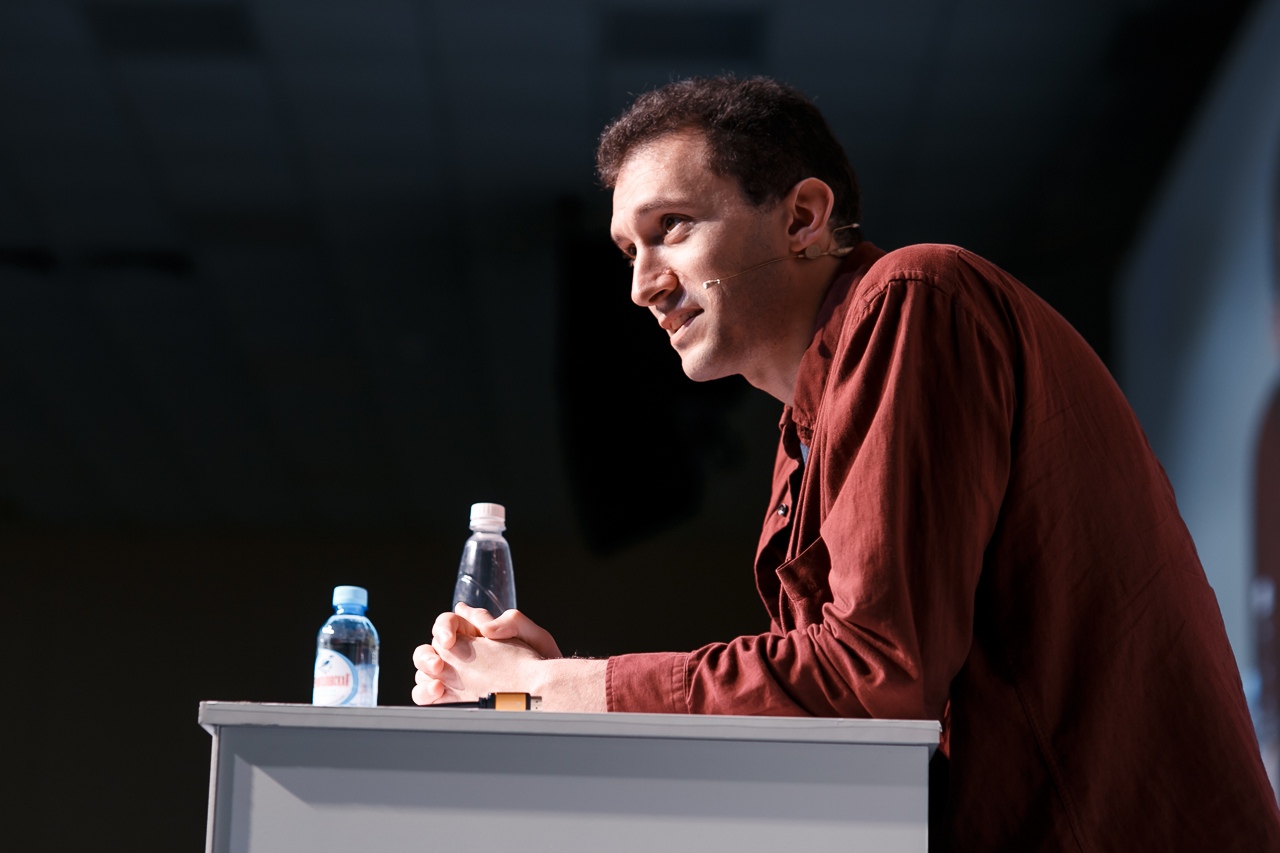
But most of the speeches were designed for everyone at once. Roman Nevolin compared different programming paradigms - and in order to follow his thought, one did not need to personally have experience with each. Ilya Klimov talked about JavaScript "for those who are not there" - that is, his report was suitable for everyone except the javascriptors themselves. At Dennis Mishunova I did was report the type "how to live, when you do not want to go crazy in the race for technology" - as this issue is relevant for all, except for working with COBOL.
A separate story - "The Intelligence" of Dmitry "Goblin" Puchkov withIvan Yamshchikov . The goblin, of course, is the most controversial figure of the festival: even before the event, some viewers were very pleased with his participation, while others were very unhappy. In this case, machine learning, which deals with Ivan - is not what Dmitry specializes in. And how did the interview go? It’s up to the audience, but they were delighted: in the reviews they write that thanks to both interlocutors it came out lively, intelligibly, informative and fun.

Is that the timing of 45 minutes called insufficient for such an interesting conversation. But the feeling “too short” could be partially corrected in the discussion area. As at our conferences, after the speech each speaker answered the questions of the audience in a specially designated place where they could communicate as they should - and many speakers were surrounded there.
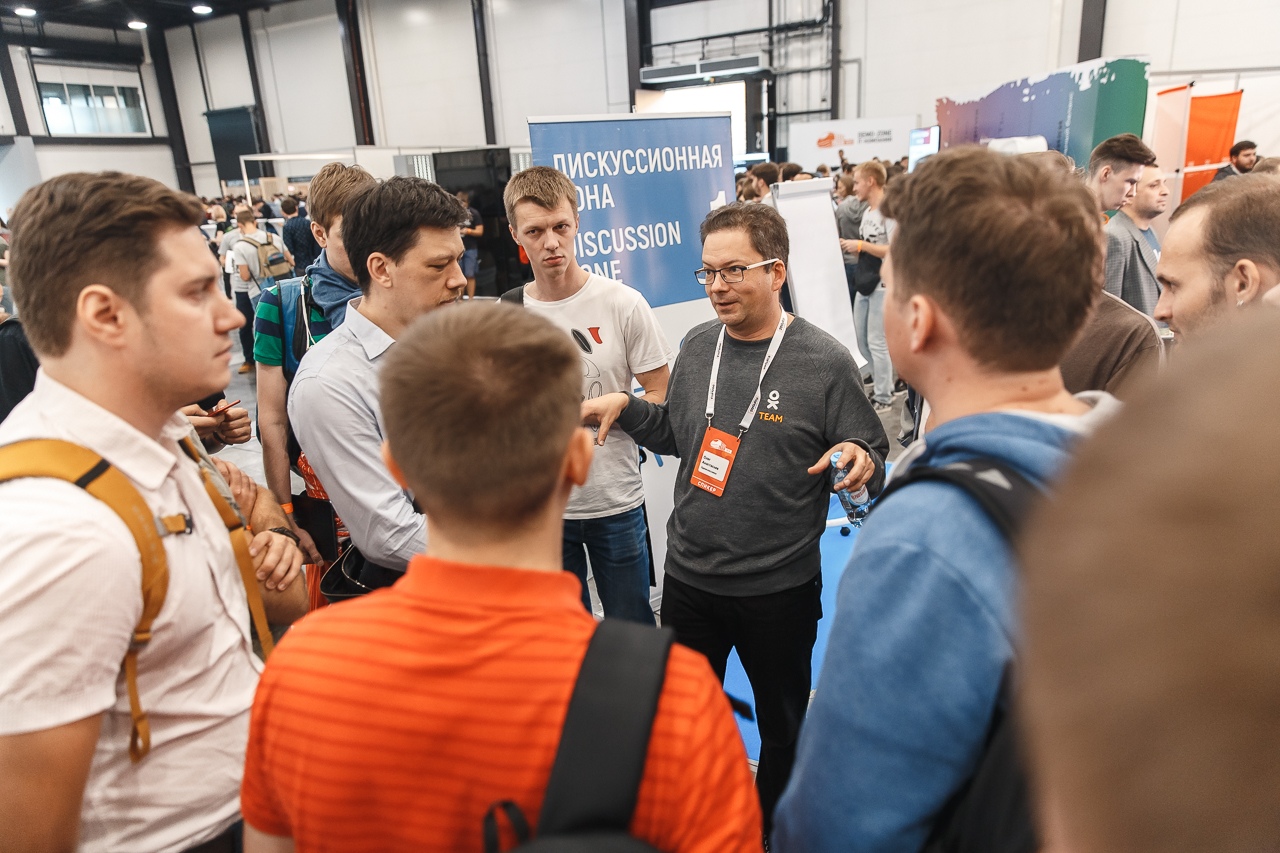
Video recordings of the reports will appear in the public domain later, but for now we sent them to the viewers who filled out the feedback form. It is long, and in some it caused objections. But without a good reason, we wouldn’t do that: after all, with a long form, we increase the work not only to the audience, but also to ourselves!
What is the reason? The fact that without detailed feedback is not obvious how to make the audience better in the future. For example, how to understand which reports you liked the most? If judged by indirect signs like revival in the hall, then only the “most cheerful” will turn out to be the “best”, and the more thoughtful will obviously lose. But with feedback, everything is much clearer: we derive an average estimate for each report, and they can be compared.
So thanks to the viewers who rated, we have compiled a list of the best TechTrain reports. If you participated in the festival and received videos, you can decide on it what to watch first. Here are the top three:
- Vitaly Friedman with the theme "Design patterns of smart responsive interfaces . " Last year Vitaly, known as the creator of Smashing Magazine, fell in love with the viewers of our conference HolyJS. But it was obvious that not only JS developers could like his vivid presentations about interfaces, and TechTrain viewers confirmed the first place.
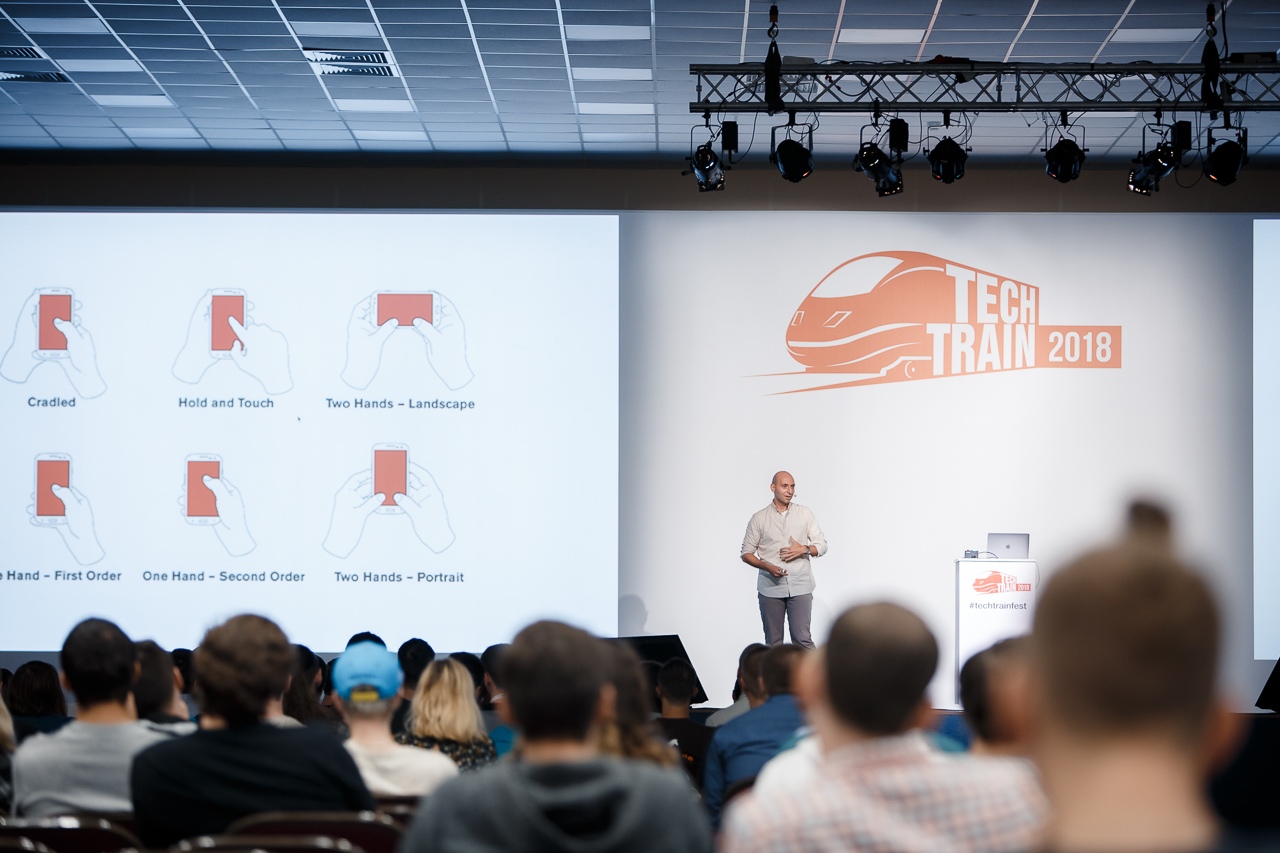
- Dmitry Zavalishin - Practices and cases of project management . By title, you might think that the report is relevant only for managers. But in fact, he could be interested in anyone who thinks not only about the code, but also about how this code arises in real teams on real projects. We all face the processes, the book “The Mythical Man-Month” is to some extent relevant for all of us - and this report too.
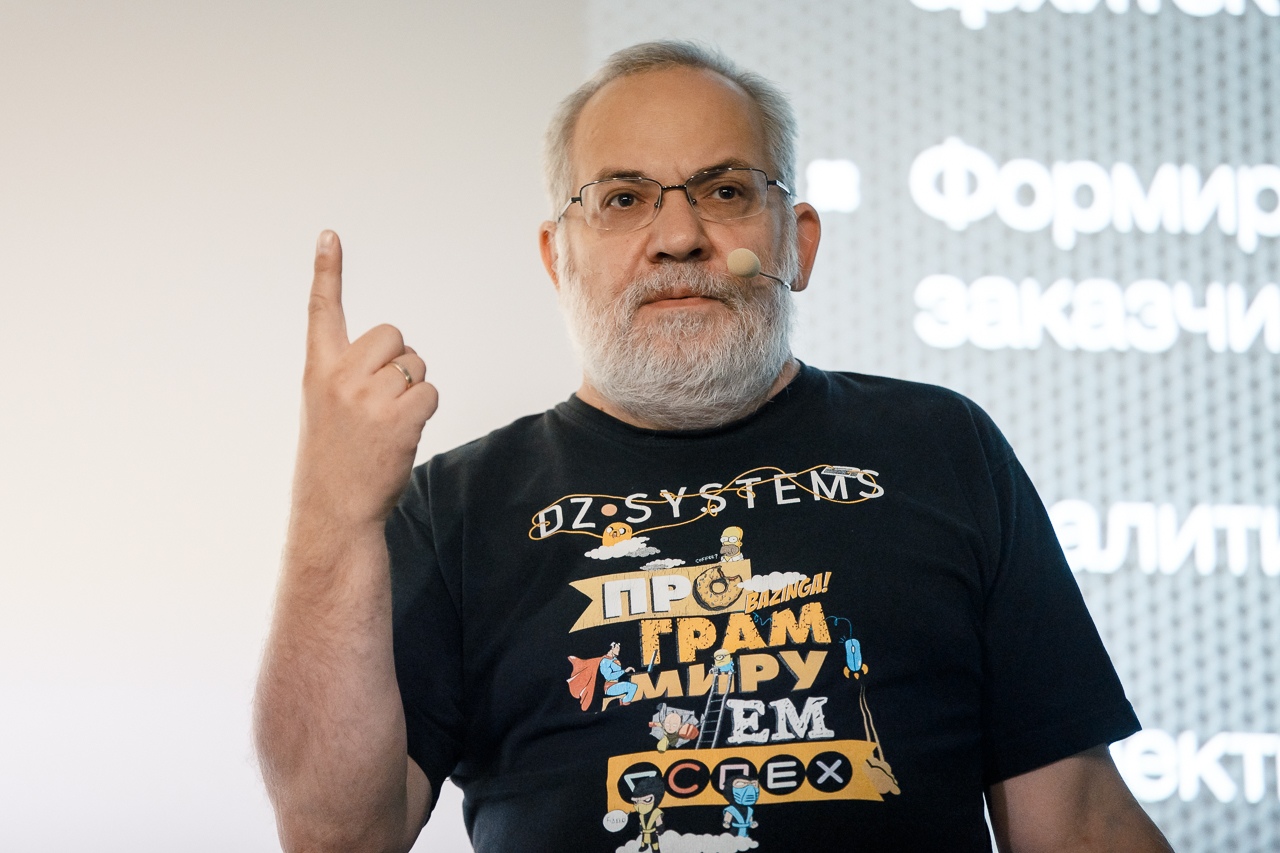
- Evgeniy Borisov - Myths about Spark, or Can Spark be used by an ordinary Java developer . But this is an example of a “report for a specific audience”, already in the name of a JVM-oriented world. Considering that among the javistes, Eugene has long had a huge authority, the high rating in this case is hardly surprised anyone.

The rest of the top 10 simply list: - Complication of the game (Sergey Abdulmanov, Mosigra)
- debugger; for developers (Denis Mishunov, Independent Consultant)
- Full transparency in the company (Mikhail Samarin, Futurice)
- How data is turned into knowledge and why dreaming is one of the most important skills (Ivan Yamshchikov, ABBYY)
- Intelligence with Ivan Yamshchikov (Dmitry Puchkov, Oper.ru)
- Session of blitz-questions (Andrey Breslav, JetBrains)
- The evolution of paradigms (Roman Nevolin, Careem)
After the report by Vitaly Friedman, the official closing of the festival took place, but for some participants this was not the end: Dmitry Nazarov invited everyone to an improvised afterparty to an institution nearby, and from the TechTrain Telegram chat we learned that participants who came from Petrozavodsk want to coming home to get together again. And I suppose we do not know about all such activities, so you better tell us about them!
